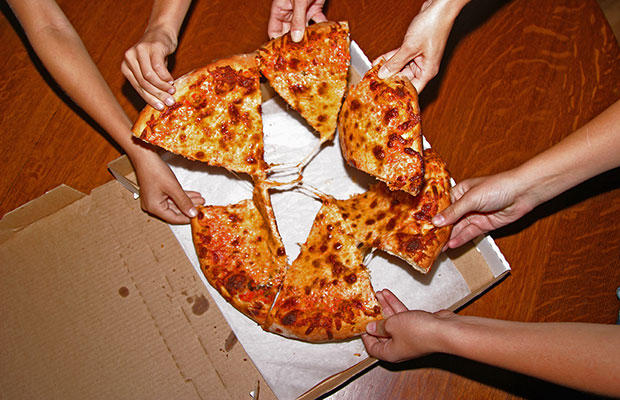How to Lose Weight and Stay Healthy With a Disability
Many people find that weight can slowly creep on to their bodies. If you have a disability, you may notice this as well. But unlike others, it can be difficult to know how to lose weight healthily if you are disabled. The best ways to lose weight healthily for any person—disabled or otherwise—is to have a sensible diet and get activity. If you’re disabled, taking these measures and consulting professionals can help you lose weight and stay healthy.[1]
Steps
Part 1 Consulting Professionals for Advice
-
1
See your doctor. If you have a disability, it’s important to discuss your concerns for losing weight with your doctor. He or she can let you know if you are healthy enough for some type of exercise or activity as well as let you know of any dietary or other restrictions you may have.[2]
- Talk to your doctor about the types of exercise and dietary changes you want to try. The doctor will let you know if they’re safe for you. Your doctor may suggest meeting with a dietician and fitness professional to help you find the best and safest ways for you to lose weight.
- Be aware that loneliness and depression, which are emotional disabilities that can also affect the physically disabled, can affect on your appetite and how you eat. If you are experiencing either condition, ask to your doctor about how best to treat the condition and lose weight.[3]
-
2
Meet with a registered dietician. You may need to adjust your diet to lose weight and stay healthy because of slowed metabolism that can happen with a disability. Even if you don’t have special dietary needs, a registered dietician can help you formulate a plan to best lose weight and get the nutrients you need to maintain your wellbeing.[4]
- Let your dietician know that you’d like to lose weight and stay healthy. Make sure to tell the dietician about your normal diet and ask how you can gradually make changes to lose weight. You should also ask the dietician if there are any specific nutrients you should get through diet.
- Ask your doctor or local hospital to suggest a local registered dietician. You can also find one on the Academy of Nutrition and Dietetic’s website at http://www.eatright.org/find-an-expert.
-
3
Consult a physical therapist or certified fitness professional. Physical activity is an excellent way to boost weight loss. Depending on what type of disability you have, you may be limited in what type of movement you can do. However, even small movements may help you lose weight. Meeting with a physical therapist or certified trainer can help you figure out what types of movement and activity are feasible for you and can help you lose weight.[5]
- Ask your doctor to suggest a physical therapist or certified inclusive fitness trainer, which is someone trained to work with people who have disabilities. You can also find a therapist or trainer by consulting the website of the American Physical Therapy Association or the National Center on Health, Physical Activity and Disability.[6]
- Give your physical therapist or trainer copies of your medical records and let the person know about your weight loss goals. The person may examine you and ask you questions to get a sense of what you are able to do—as well as things you might like to do to help you safely lose weight.
Part 2 Doing Different Activities
- 1 Make modifications as necessary. No matter what type of activity you decide to do to help you lose weight, remember that you can always make modifications to accommodate your disability. Ask a fitness professional for modifications or consider alternatives to other activities you do. For example, you could try running or walking in a pool with a floatation belt or using resistance bands in your wheelchair.[7]
-
2
Do physical activity most days. Activity and healthy diet can help you lose weight and promote your health. Sensible weight loss is 1-2 pounds per week.[8] Getting some type of activity 5-6 days a week can help lose weight and boost your health. Remember that activity can also energize you and help improve your mood.[9]
- Talk to your doctor about how much physical activity is feasible for you each week. You might try to get ½ hour every day and break it up into manageable pieces. For example, try 3-10 minute workouts. Remember to start slowly and gradually increase your activity level as you are able.
- Choose activities that challenge your body and that you enjoy without pain. It may take a little trial and error to find what works and what you like. Consider activities such as walking, using a hand-bike, swimming, or light stretching.
- Make sure to warm up, stretch, and cool down any time you do activity. Always listen to your body and stop if you experience any pain.
-
3
Incorporate strength training. Muscle mass can speed up your metabolism and burn calories. Strength training can also help people with disabilities perform regular tasks like transferring to and from a wheelchair as well as pushing, holding and carrying things. Add a few simple strength training exercises to your daily activity in order to lose weight and promote your wellbeing.
- Consult a certified inclusive trainer before you start. This person can develop the best strength-training moves for your needs and abilities.
- Do exercises that engage parts of your body on which you can focus. For example, if you’re in a wheelchair, do exercises that engage your arms and core.
- Consider trying regular yoga or Pilates. Both of these can stretch and strengthen your body while incorporating moves for your specific disability.
-
4
Let your body rest. It’s important for any person to give his or her body at least one full day of rest every week. You may want to take one or two if you are disabled. Rest can help build muscles and give them proper time to recover, especially if you are new to activity.
- Sleep for 8-9 hours of sleep every night. Take a 30 minute nap if you’re tired during the day.[10]
Part 3 Eating a Healthy Diet
-
1
Eat regular, nutrient-rich meals. Calories play an important part of how much weight you lose, so it’s important to eat three balanced and healthy meals every day. However, getting enough nutrients is especially important to any person with a disability. Selecting whole, nutrient-rich foods can promote weight loss while maintaining and even boosting your health.[11]
- Aim to lose 1-2 pounds every week by eating 500-1000 calories less than your current calorie intake.[12] Don’t eat less than 1,200 calories a day because this will keep you from losing weight and make you feel miserable.[13]
- 2 Vary food choices from the five food groups. To stay healthy, you need to eat different foods from the five food groups. They are: fruits, vegetables, grains, proteins, and dairy. Make different selections at each meal to reap the health benefits of a wide range of nutrients. Healthy foods also generally have a lot of fiber, which can keep you from eating too much.[14]
-
3
Enjoy lots of fruits and veggies. Whole fruits and vegetables are high in a broad range of nutrients that you need to stay healthy.[15] Have at least 1 ½ to 2 cups of fruit and 2 to 2 ½ cups of vegetables every day. These can help keep you full throughout the day and promote weight loss.[16]
- Select whole fruits and vegetables like blackberries, raspberries, bananas, spinach, squash, and sweet potatoes. Vary your fruit and veggie choices at each meal so that you get the health benefits of different nutrients.
- Drink 100% fruit or vegetable juice as a serving of fruit or vegetable.
-
4
Choose whole grains. Whole grains offer you fiber and other vital nutrients while keeping you full throughout the day. Choose whole wheat bread, pasta, oatmeal, cereal, or brown rice over things like white rice and bread.
[17]
- Eat 3-5 servings of whole grains daily.[18] Consider trying different whole grains like amaranth, barley, buckwheat, bulgur, quinoa, and spelt.
- 5 Consume plenty of dairy. Dairy products can help keep your bones strong and build muscle, both of which may be especially important if you have a disability. Dairy can also help you lose weight. Drinking milk and eating foods such as cheese and yogurt can help you get your 3 cups of dairy every day.[19]
-
6
Limit or eliminate junk food. Junk food is enemy #1 for any person trying to lose weight. It is often high in fat and calories, which can undo any other steps you’ve taken to lose weight, weight.[20]
- Stay away from refined, sugary carbohydrates like white bread, pasta, rice, and baked goods. Avoiding these foods altogether or replacing them with healthy, whole grain alternatives can help you lose weight.[21]
- Limit or get rid of fatty foods such as French fries or burgers.
-
7
Swap unhealthy choices for whole foods. If you have certain unhealthy foods you like, consider swapping them for healthy alternatives. This can help you cut calories while still enjoying your favorite foods. For example, eat brown rice instead of white rice. Add more vegetables to your plate than meat or pasta. Try air-popped popcorn instead of eating potato chips. If you’re looking for crunch, try carrots or cut veggies.
- Give yourself one day each week to cheat. This can curb cravings and minimize the risk of overindulgence.[22]
-
8
Build daily meal plans. One way to track calories and make sure you’re getting enough nutrients is to write a meal plan. This can not only ensure you’re eating healthy and getting enough nutrients, but also may save you time and effort at the grocery store.
[23]
- Include three meals and two snacks in your daily plan. Make different food choices at each meal. For example, have cottage cheese with fresh berries, oatmeal, and coffee with skim milk for breakfast. Try a salad with different vegetables, grilled chicken, and homemade vinaigrette for lunch. Dip cut vegetables in hummus for a snack. Have a lean steak, small salad, and steamed mixed vegetables for dinner. If you want dessert, have a sugar-free popsicle or some apple slices sprinkled with cinnamon.
- Include any restaurant meals in your plan. See what online tools restaurants offer or call ahead to a restaurant see what healthy choices are on the menu. Select a couple of healthy dishes and write these on your plan. Make sure to stay away from dishes in heavy sauces as well as buffets and breadbaskets.[24]
-
9
Drink to keep hydrated. It’s important to your wellbeing to drink enough water every day. This can also help you lose weight. Drink about 3 liters of liquid every day and more if you are active.[25]
- Stay away from high calorie beverages like soda, juice cocktails, specialty coffees, and alcohol. Go for non-calorie choices such as diet soda, tea, plain coffee, or sparkling water.
-
Study: There Are Belly Fat Genes?!
The claim: Ridding yourself of stubborn belly fat might be harder than
-
The Think Yourself Fit Exercise Plan
If you struggle to maintain an exercise program or find it har
-
Your Worst Diet Days ... Solvedvar zeus = zeus
Just as winter can be a tough time of year for dieters—lots of u
-
How to Maintain Your Current Weight
Weight management encompasses an array of methods to maintain a curre
-
How to Begin a Walking/ Weight Loss Program for the Very Unfit Person
Would you like to increase your fitness and perhaps lose some weight
-
12 Tips To Help Shed Pounds
For people who struggle to lose weight, it can be a long, drawn-out p
- DON'T MISS
- Spray Yourself Thin?
- How Excess Body Fat Can Hurt Your Health
- Fat Loss Mistakes to Avoid
- Can’t Lose Weight? Follow These Great Tips!
- Celebrity Nutritionist Kimberly Snyder’s Recipe For Optimal Weight Loss
- Easy Tips to Weight Loss Success
- Best Ways To Lose Weight Without Fad Diets That Don’t Help
- Why Am I Eating This?
- Healthy Living For Quick Weight Loss
- How To Control Body Weight And Perfect Natural Weight Loss Tips




